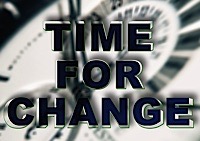 Share – share with colleagues. Share with customers. Even share at times with would be competitors. Innovations depend on it. Dare to share.
Share – share with colleagues. Share with customers. Even share at times with would be competitors. Innovations depend on it. Dare to share.
Create stuff together – collaboration is a fundamental element to innovation success.
Don’t cry over spilled milk – accidents happen. Sometimes great innovations are the result of accidents.
Flush the toilet when you’re done – not everything that you create is useful. Sometimes it’s best to just flush it away and wash your hands.
Take snack breaks – nourish yourself – mentally, physically, and spiritually. It will give you added energy and boost your long-term innovation success.
innovation DAILY
Here we highlight selected innovation related articles from around the world on a daily basis. These articles related to innovation and funding for innovative companies, and best practices for innovation based economic development.
Illinois Approves Angel Investment Credit, Extends R&D Credit
 Illinois Gov. Pat Quinn recently signed legislation approving a new tax credit to encourage angel investment and extending the state's R&D tax credit one more year. The Innovation Development and Economy Act (SB 2093) allows eligible angel and early-stage institutional investors to take a 25 percent tax credit on investments in small, technology firms. Up to $2 million may be claimed on an individual investment for a $500,000 tax credit. The program is capped at $10 million and will be effective on Jan 1, 2011.
Illinois Gov. Pat Quinn recently signed legislation approving a new tax credit to encourage angel investment and extending the state's R&D tax credit one more year. The Innovation Development and Economy Act (SB 2093) allows eligible angel and early-stage institutional investors to take a 25 percent tax credit on investments in small, technology firms. Up to $2 million may be claimed on an individual investment for a $500,000 tax credit. The program is capped at $10 million and will be effective on Jan 1, 2011.
Passed unanimously by the Illinois General Assembly, SB 3655 extends the state's R&D tax credit for one more year. The provision allows for a tax credit equal to 6.5 percent of qualifying expenditures that increase R&D activities in Illinois. These expenditures include, for example, technological and experimental research whose purpose is to develop new or improved components, functions, performance, reliability or quality.
SB 2093 is available at: http://ilga.gov/legislation/publicacts/96/PDF/096-0939.pdf.
Soccor Robots
NOTE: Rich Bendis originally saw this video on the Scientific American site.
http://www.scientificamerican.com/video.cfm?id=102706187001
How To Jump-Start Innovation At Your Company
 A good friend of mine and fellow CEO, Glen Lubbert, recently asked me the question about how to get his whole organization thriving, growing, and more innovative. We were hiking St. Joseph’s hill on what turned out to be an adventuresome hail-filled day in Los Gatos, and talking about growth strategies for his firm, Mojo Interactive.
A good friend of mine and fellow CEO, Glen Lubbert, recently asked me the question about how to get his whole organization thriving, growing, and more innovative. We were hiking St. Joseph’s hill on what turned out to be an adventuresome hail-filled day in Los Gatos, and talking about growth strategies for his firm, Mojo Interactive.
Glen said that he felt his team were holding back, leaving a part of themselves on the sideline instead of on the field. This is not an unusual sentiment to hear from creative leaders like Glen. I know from so many conversations I have with leaders of big global brands, mid-size Fortune 100 firms, and entrepreneurial start-ups that this is a central concern for most of them. And, by saying this, Glen wasn’t complaining, but actually showing an optimism that he knows there is MORE there, and he knows his job as a leader is to encourage it to come out.
The OECD on Innovation: Once Again
 Hardly a month goes by without some new pronouncement
by a respected body on the subject of innovation. My particular interest
is seeing how these efforts view the role of IP within the larger
framework of innovation. While it certainly is the case that IP rights
are not identical to innovation, there surely is a relationship between
them. However, what that relationship is, and how governments may
contribute to it, are both questions to which the answers remain
elusive.
Hardly a month goes by without some new pronouncement
by a respected body on the subject of innovation. My particular interest
is seeing how these efforts view the role of IP within the larger
framework of innovation. While it certainly is the case that IP rights
are not identical to innovation, there surely is a relationship between
them. However, what that relationship is, and how governments may
contribute to it, are both questions to which the answers remain
elusive.3 Basic Business Tips For Startup Non-Profits
 One of the things I have the privilege to do outside of work is serve on the board of a Christian church in Brookline called Highrock. The church was founded less than 2 years ago, and it’s been a pleasure watching this “startup” develop.
One of the things I have the privilege to do outside of work is serve on the board of a Christian church in Brookline called Highrock. The church was founded less than 2 years ago, and it’s been a pleasure watching this “startup” develop.
I’ve also been able to see the operations of a few other non profits over the years.
Many are well run by unbelievably talented and inspirational people. But there are a few best practices I’ve seen that I think could be very helpful, especially for startup non-profits.
The 18 States Facing The Most Brutal Austerity Cuts
 Even the sober Center on Budget and Policy Priorities says 46
states are facing a Greek-like crisis. These state governments must
inaugurate an austerity regime to cut spending by $112 billion for
FY2011.
Even the sober Center on Budget and Policy Priorities says 46
states are facing a Greek-like crisis. These state governments must
inaugurate an austerity regime to cut spending by $112 billion for
FY2011.
FY2011 begins on Thursday.
States have already cut over $300 billion from budgets in the past two years to make up for rising costs and disappearing revenue. For California and New York, this means some of the bloodshed is over. For other states, it's getting much worse.
G20 leaders urged to invest in “green” economy
 (eTN) - In what the United Nations calls a “continued push to keep the poorest and most vulnerable at the forefront of international discussions,” Ban Ki-moon, UN’s secretary general, over the weekend urged leaders of the Group of 20 (G20) to scale up investment in clean energy and green economy as part of the effort to achieve the Millennium Development Goals (MDGs).
(eTN) - In what the United Nations calls a “continued push to keep the poorest and most vulnerable at the forefront of international discussions,” Ban Ki-moon, UN’s secretary general, over the weekend urged leaders of the Group of 20 (G20) to scale up investment in clean energy and green economy as part of the effort to achieve the Millennium Development Goals (MDGs).
"The risks -- and costs -- of inaction on climate change grow each year. The more we delay, the more we will pay," he told leaders of the G20 industrialized and developing economies at a working luncheon Sunday in Toronto, Canada.
Mr. Ban has reportedly been participating in the two-day meeting to “try to keep the world leaders' focus on promotion of development in poor countries, despite the global economic slowdown.”
Tesla Motors rings Wall Street’s bell
 On a day when the Dow and the Nasdaq were in the red, Tesla Motors, the Palo Alto, Calif.-based electric-car startup, saw shares of TSLA climb slowly but steadily. Shares in the company’s initial public offering were priced at $17 last night by the offering’s four underwriters, but the first trades today went for $19. The price just this second, at 8:30am Pacific, is hovering in the $17-18 range.
On a day when the Dow and the Nasdaq were in the red, Tesla Motors, the Palo Alto, Calif.-based electric-car startup, saw shares of TSLA climb slowly but steadily. Shares in the company’s initial public offering were priced at $17 last night by the offering’s four underwriters, but the first trades today went for $19. The price just this second, at 8:30am Pacific, is hovering in the $17-18 range.
Tesla’s debut marked the first IPO of an automaker in the U.S. since Ford’s 54 years ago. The company’s stock priced at $17 a share last night, exceeding the expected range of $14 to $16, with the potential to rake in $226 million and value the company at $1.6 billion. After an IPO, underwriters have the challenge of matching investor demand with supply of shares to set an opening price for trading. In Tesla’s case, that didn’t register until more than two hours after Tesla CEO Elon Musk rang the bell to open the Nasdaq.
Key employee attributes for startups
W orking at a startup should be a labor of love. The hours can be long and the pay can be modest, but for many people, the culture can’t be beat.
orking at a startup should be a labor of love. The hours can be long and the pay can be modest, but for many people, the culture can’t be beat.
Most startup founders are incredibly passionate and dedicated – and these qualities permeate the entire organization. In fact, startup companies often engender an entrepreneurial culture that lives long after the early days, inspiring employees to spin out and create entirely new companies with what they have learned.
A key challenge for startup executives, though, is filling their staff with competent, motivated employees that share their vision and passion – and not people who want to punch in at nine and punch out at five, with a two-hour lunch in-between.
Samsung Launches World’s First Solar Powered Mobile Phone [Boon for Rural India]
 Samsung has launched ‘Samsung Guru E1107’ phone that runs on solar
powered battery.
Samsung has launched ‘Samsung Guru E1107’ phone that runs on solar
powered battery.
The phone, targeted towards Rural India provides 5 ~ 10 minutes talk time for an hour of charging and has an inbuilt Torch as well.
Samsung E1107 Features
- 3.86cm (1.52) LCD provides comfortable viewing of menus and text.
- Mobile Tracker – Automatically sends SMS to a specific number set in advance when mobile is lost or stolen and the SIM card is replaced.
- Enhanced Security – Send emergency SOS messages to pre-designated contacts.
- An interesting feature is Fake Call, that sets off a ringbones so users can pretend they have an incoming call. [more]
- FM Radio/Torch
The Creative Class in Rural Areas
 One of the most frequent questions I’m asked is: How can rural areas best cope and thrive in the increasingly spiky creative economy?
One of the most frequent questions I’m asked is: How can rural areas best cope and thrive in the increasingly spiky creative economy?
New research by economists David McGranahan and Timothy Wojan of the U.S. Department of Agriculture and Dayton Lambert of the University of Tennessee provides some new and important insights. Their study, entitled “The Rural Growth Trifecta: Outdoor Amenities, Creative Class and Entrepreneurial Context,” published in the July 2010 issue of the Journal of Economic Geography looks closely at the economic forces that are acting on rural areas and the local assets these areas can use to most effectively respond to these forces and spur development and prosperity. Rural areas can no longer depend on manufacturing branch plants as a source of jobs and growth, but rather can work to bolster local amenities, spur entrepreneurship, and enable the creative class to generate jobs and growth. Their main conclusion is that amenities matter a lot to rural development. Here’s the abstract for the study:
5,000 Years in 90 Seconds

Great empires rise and fall, mostly in the Middle East. Watch history play itself out on dynamic maps and timeline.
Is Facebook Founder Mark Zuckerberg More Powerful Than the President?

Who is more powerful: 400-million-user strong Facebook founder Mark Zuckerberg, or the leader of the free world?
That was the question posed to Soraya Darabi, #53 on our Most Creative People in Business list, who explained that their power, at least in terms of reach of voice, is not so different.
Darabi broke down the access to communication tools that Obama and Zuckerberg hold, comparing the old-age methods of the president (network TV, radio, newspapers, etc.) to Facebook's reach as a social network.
X Prize Foundation Announces $10 Million Oil Disaster Cleanup Challenge
 Have an innovative solution to clean up the BP oil disaster in the
Gulf? Now's your chance to be heard--and make some money in the process.
At the TEDxOilSpill conference this morning, Francis
Beland, VP, Prize Development at the X Prize Foundation announced a
sweet incentive for figuring out a way to mop up BP's mess: a $10
million X Prize.
Have an innovative solution to clean up the BP oil disaster in the
Gulf? Now's your chance to be heard--and make some money in the process.
At the TEDxOilSpill conference this morning, Francis
Beland, VP, Prize Development at the X Prize Foundation announced a
sweet incentive for figuring out a way to mop up BP's mess: a $10
million X Prize.
The prize is a testament to the difficulty of stopping the oil spill--similarly large X Prizes have been offered for DNA sequencing technology, fuel-efficient vehicles, and robotic moon missions. No word yet on requirements for winners, but Beland is already soliciting suggestions at This email address is being protected from spambots. You need JavaScript enabled to view it.. Details will be announced in the coming weeks.
Tech Coast Angels Launches New Sidecar Fund
 The Tech Coast Angels, the venture capital angel investment group, has launched a new "sidecar" fund, the Angel Capital Fund, according to angel investor Dave Berkus. The fund target size is around $5-6M. A sidecar fund is an investment fund which is used by angel investment groups to bolster the investments in those groups' portfolio, without individual involvement of specific angels in the investment rounds. The new fund was announced by Berkus on fellow Tech Coast Angels member Frank Peters podcast show Friday. A sidecar fund allows unaffiliated angels or angels not as interested in making individual investment decisions to participate in a wider range of angel deals by an angel group.
The Tech Coast Angels, the venture capital angel investment group, has launched a new "sidecar" fund, the Angel Capital Fund, according to angel investor Dave Berkus. The fund target size is around $5-6M. A sidecar fund is an investment fund which is used by angel investment groups to bolster the investments in those groups' portfolio, without individual involvement of specific angels in the investment rounds. The new fund was announced by Berkus on fellow Tech Coast Angels member Frank Peters podcast show Friday. A sidecar fund allows unaffiliated angels or angels not as interested in making individual investment decisions to participate in a wider range of angel deals by an angel group.
Commercialization Of Inventions Made Simple
 Lets assume you have an idea for the next great thing. Where do you go from here? Based upon extensive experience in developing products for both large and small companies, I offer a road map of the major steps and important choices faced by inventors
Lets assume you have an idea for the next great thing. Where do you go from here? Based upon extensive experience in developing products for both large and small companies, I offer a road map of the major steps and important choices faced by inventors
Inventors benefit most from their inventions when they have commercialized and patented them. Inventors should seek a patent to protect their invention.
Patenting is only the start of your work. You must decide how far to bring the idea. Your choices range from licensing the patent to starting a company based upon the idea. In general the more work you do, the less uncertainty your partners (such as licensees or investors) face and the higher your profit.
Maine’s own Innovation GURU
 If you have never seen Doug Hall live, in action, this is a warning: Words and pictures alone cannot give a true taste of the Doug Hall experience. Count this as a mere appetizer.
If you have never seen Doug Hall live, in action, this is a warning: Words and pictures alone cannot give a true taste of the Doug Hall experience. Count this as a mere appetizer.
Hall’s methods—assembled while he was on the new products team at Proctor & Gamble and fully-cooked when he opened his famous idea farm, Eureka! Ranch—are not as wild as they once were. Hall says busi- nesspeople are too uptight these days to tolerate too much fun, but he is still out to get your attention.
At a recent innovation engineering workshop, held at Sugarloaf, Hall demonstrated “meaningfully uniqueness” by juggling three green ap- ples. First, he took a bite out of each one before he tossed it, chewing and swallowing like crazy. Impressive. Hall then demonstrated a truly innova- tive way to do the trick—bite and toss, but let the apple drizzle out of your mouth like a rabid dog. Now that’s a juggling trick.
Download the PDF
Five Steps to Building a Regional Innovation Ecosystem
Our firm recently participated in the Regional Innovation & Jobs Summit hosted by the Washington Economic Development Commission. Kudos to Egils Milberg and Noreen Hobin for a very full day of content and conversation. The full day was webcast, including the intro to our session. Also thanks to our colleague from the WA-based Ingenesist Project, Dan Robles, who took great photos of our session.
Our session came at the end of the day. After a day of talking, our role was to get people engaged and active in improving specific ecosystems for the state. Here are our intro slides on SlideShare:
 In Intangible Capital, we make the case that
innovation is more than a process, it is also an ecosystem. And that
ecosystem is its intangible capital. When you apply these ideas to a
geographic region or cluster, the innovation ecosystem is made up of the
same group of intangible (knowledge-based) resources that we use at the
organizational level. These include:
In Intangible Capital, we make the case that
innovation is more than a process, it is also an ecosystem. And that
ecosystem is its intangible capital. When you apply these ideas to a
geographic region or cluster, the innovation ecosystem is made up of the
same group of intangible (knowledge-based) resources that we use at the
organizational level. These include:
- Human capital: specific areas of expertise shared by groups in the region
- Structural capital: shared communication, information, process and program resources that facilitate collaboration and innovation within the region
- Relationship capital: links with resources/knowledge outside the region


